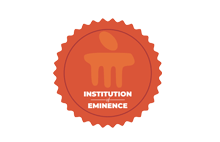Harnessing the potential of electrospun TiO2 nanofibers and nanoparticles enriched with natural dyes: a path towards affordable aolutions for low-cost electronic devices
Document Type
Article
Publication Title
Materials Research Express
Abstract
This study evaluates the morphological effects of TiO2 nanoparticles, nanofibers, and a bilayer configuration on electronic devices, such as Dye-Sensitized Solar Cells (DSSCs) and UV sensors. Cost-efficient natural dyes—curcumin, coffee beans, and banana peel—were used as sensitizers for nanomaterial films. TiO2 nanoparticles were synthesized using the sol-gel technique, while nanofibers were produced via electrospinning. Characterization techniques, including Scanning Electron Microscopy (SEM), Energy Dispersive x-ray Spectroscopy (EDS), and x-ray Diffraction (XRD), confirmed the formation and dimensions of the TiO2 nanostructures. UV-visible spectroscopy was used to determine the optical properties of the samples. TiO2 nanofibers and nanoparticles exhibited high surface-area-to-volume ratios, with nanofibers having a diameter of 20 nm and particles measuring 50 nm. A binder-free, low-temperature paste was prepared using TiO2 nanoparticles and nanofibers to develop thin films. The turmeric dye showed peak absorption at 470 nm with a band gap energy of 2.06 eV when loaded on a TiO2 bilayer film. This study aims to develop electronic devices that reduce costs and enhance performance by using low-cost, efficient, and economically viable dyes. TiO2 nanofiber and nanoparticle films show promise for cost-effective and high-performance electronic devices.
DOI
10.1088/2053-1591/ad7fb8
Publication Date
10-1-2024
Recommended Citation
Mhetre, Harshada; Chendake, Yogesh; Nayyar, Manan; and Kumar, Piyush, "Harnessing the potential of electrospun TiO2 nanofibers and nanoparticles enriched with natural dyes: a path towards affordable aolutions for low-cost electronic devices" (2024). Open Access archive. 9973.
https://impressions.manipal.edu/open-access-archive/9973


